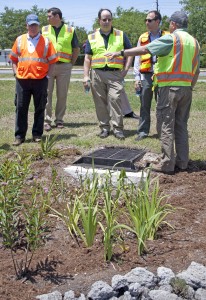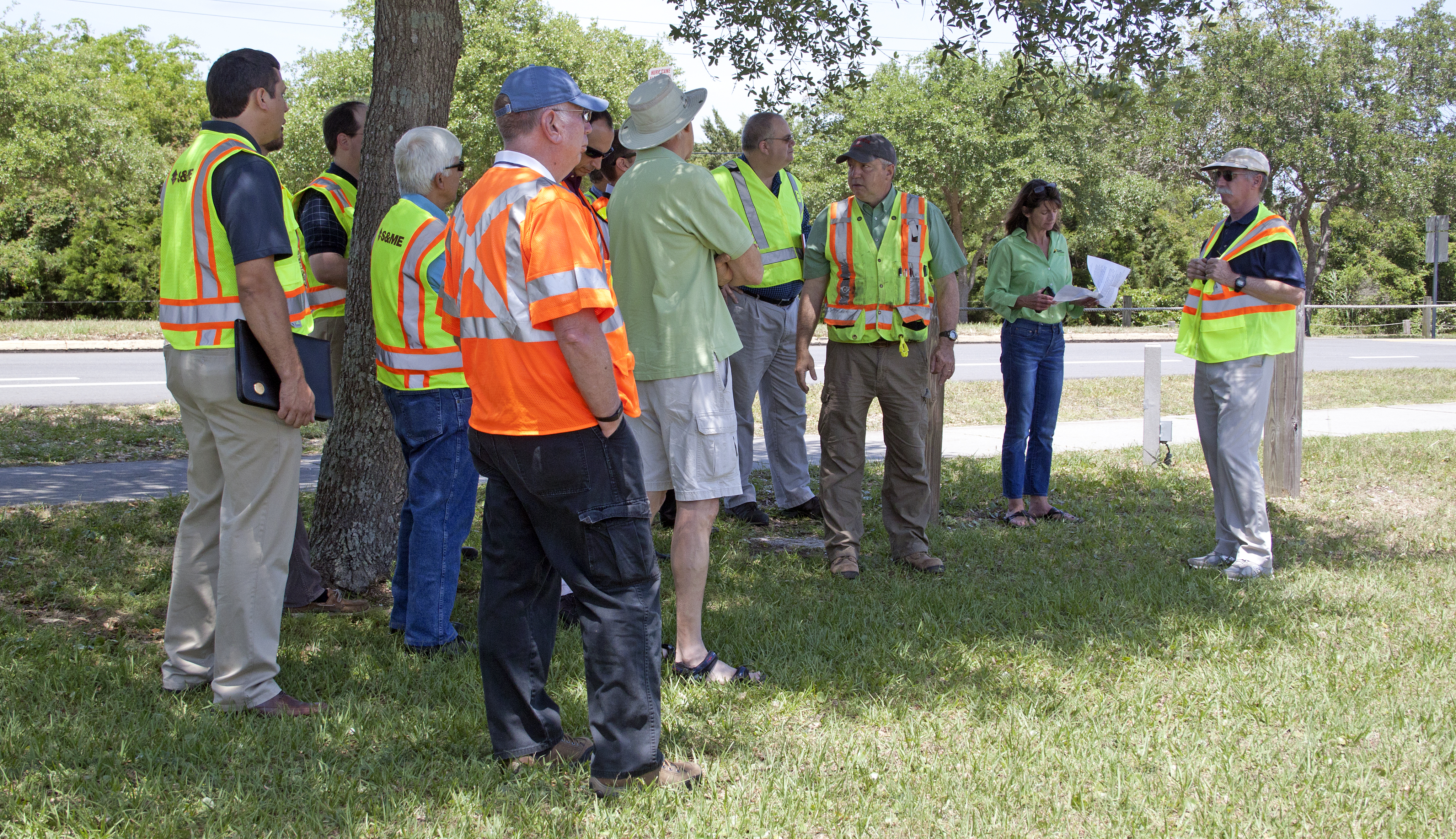
The program, hosted by the North Carolina Coastal Federation, included a presentation about the engineering and effectiveness of the town’s stormwater best management practices (BMPs) and a tour of several of the project sites.
Attendees included New Hanover County engineer Jim Iannucci, who said, with the county moving forward on several building projects in the near future, he wanted to learn about and possibly implement some of the techniques used in Wrightsville Beach.
He said the county was considering installing rain gardens as a part of the development of the new Myrtle Grove Library branch and regrading the New Hanover County Government Center’s parking lot to improve drainage.
Cape Fear Community College construction project manager Tony Carter had a similar reason for attending, saying the school is in the midst of several building projects and he wants to keep abreast of the latest stormwater reduction practices. He said he could implement a variety of the infiltration chambers, swales, berms, retrofits and rain gardens that now divert stormwater at Wrightsville Beach.
The engineers and officials were also given proof of the BMPs’ success. UNCW’s Dr. Mike Mallin presented comparison of runoff and water pollution before and after the BMPs were installed.
One graph showed the relationship between rainfall amounts and stormwater runoff from an outfall pipe into Banks Channel before and after the pipe was retrofitted.
Before the retrofit, there was a direct relationship between runoff and rainfall, he said. After the retrofit, almost no runoff ever reached the channel, even during a recent storm that dumped seven inches of rain on the island.
And, he added, because runoff carries bacteria and oil from the road into local waters, reducing runoff reduces pollution.




